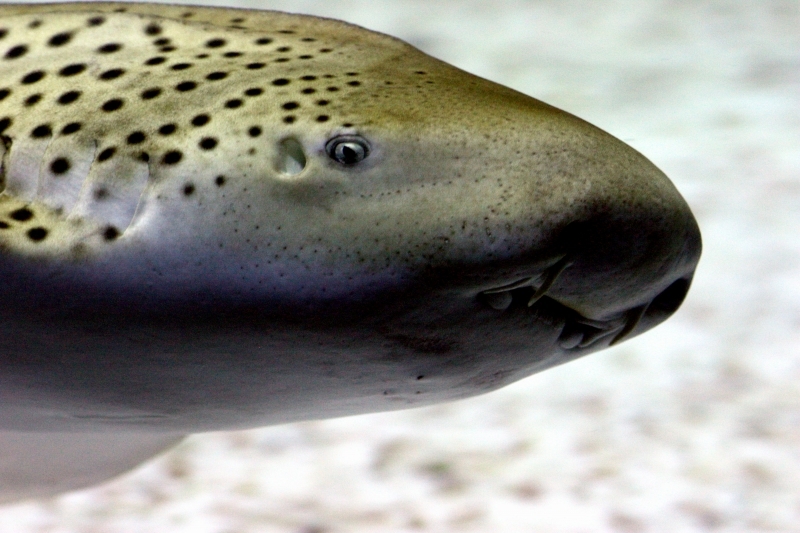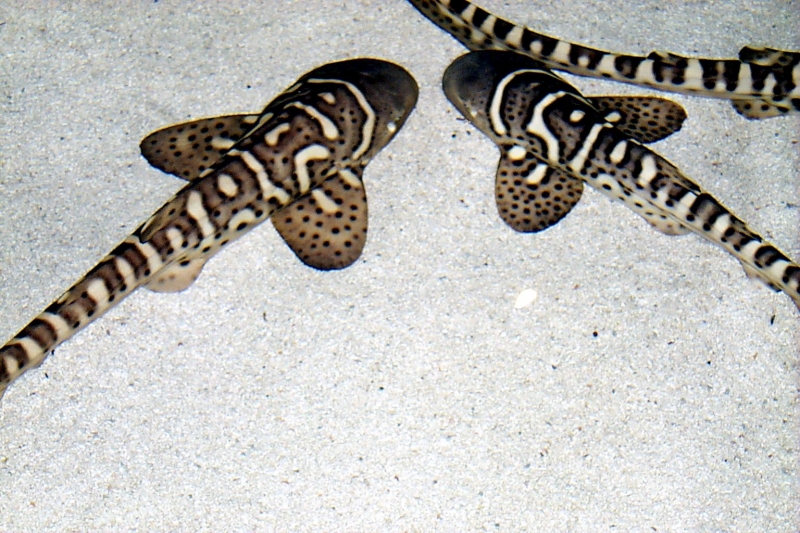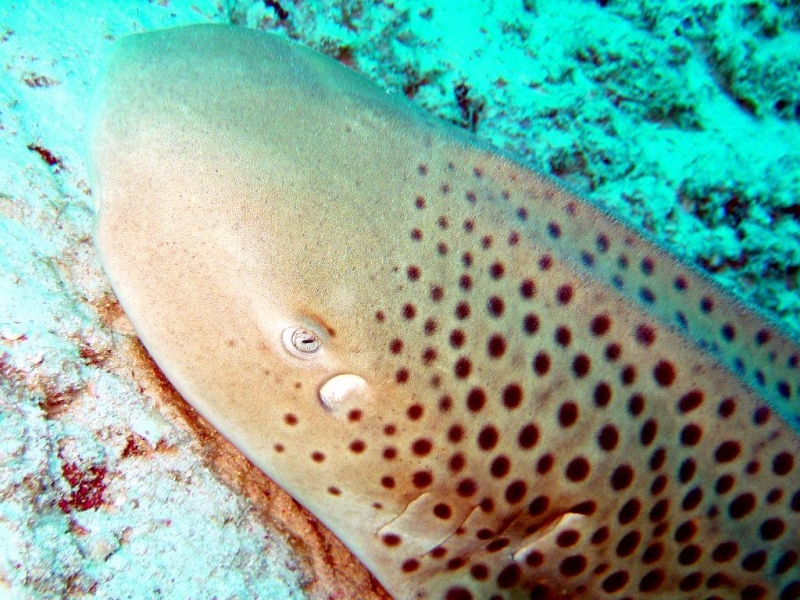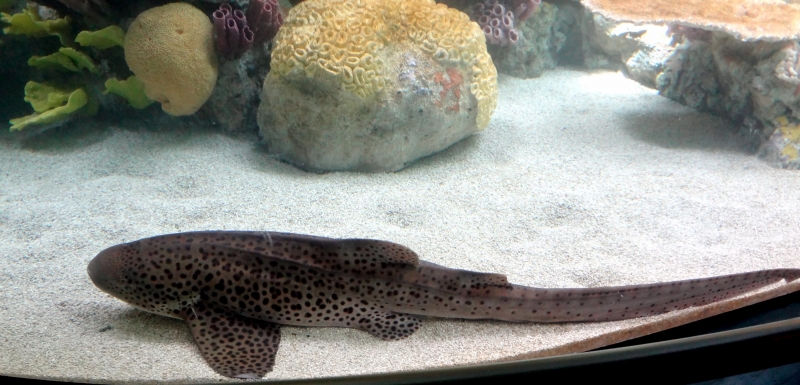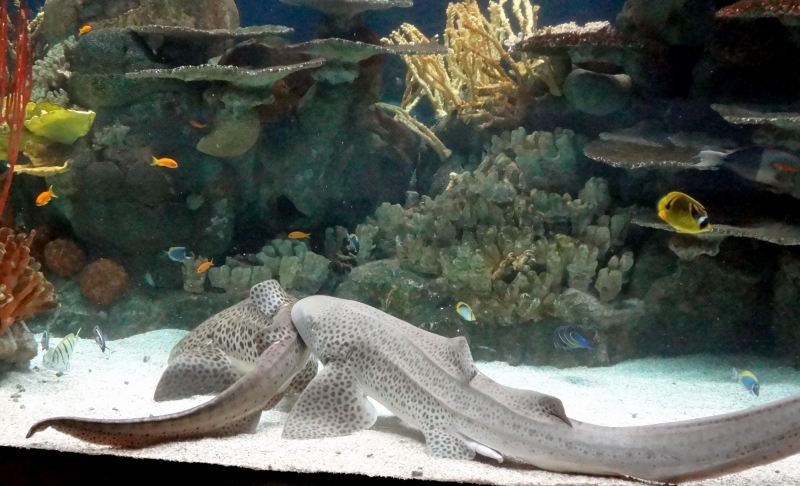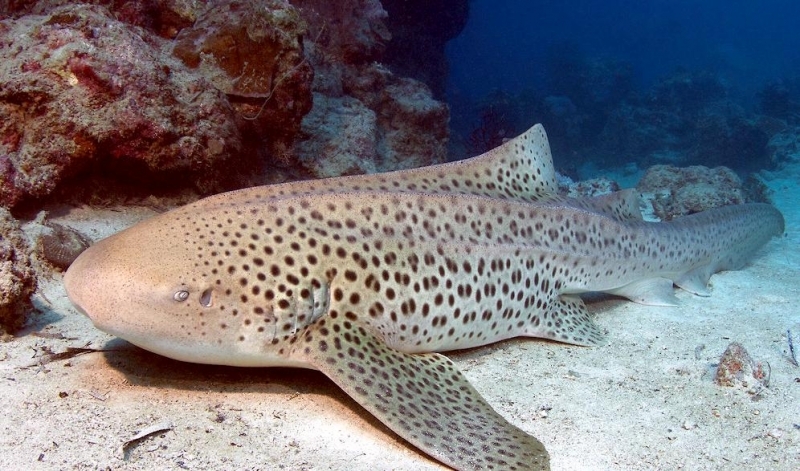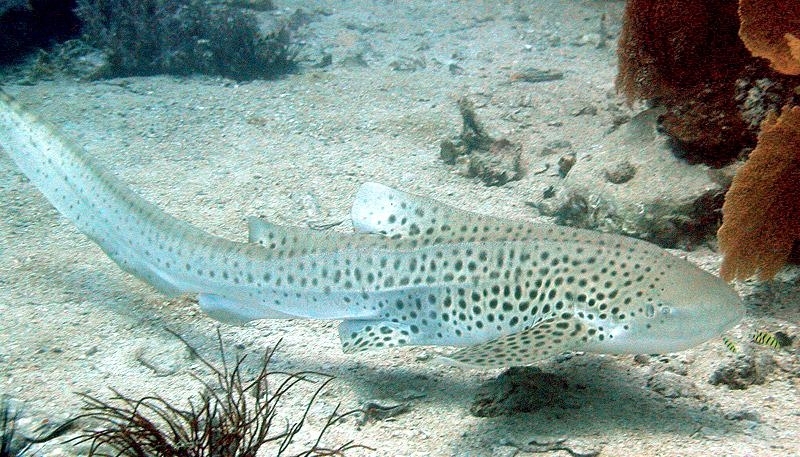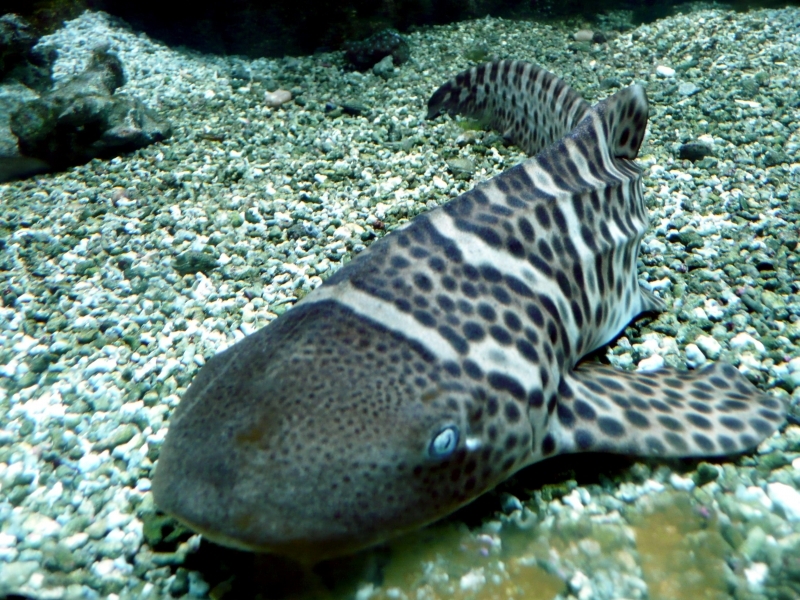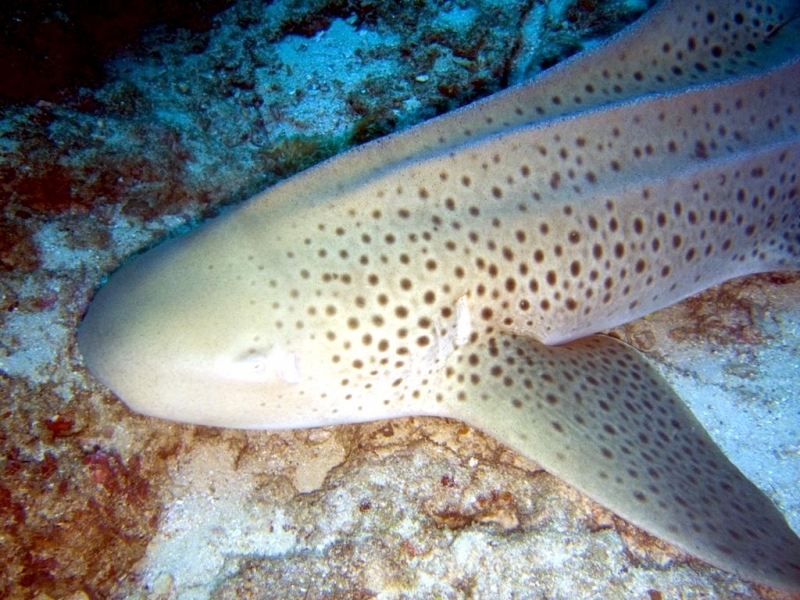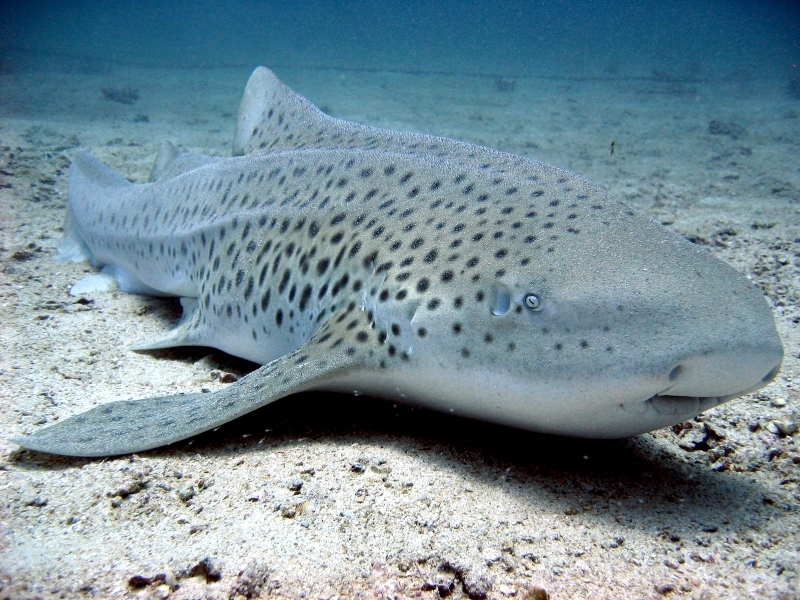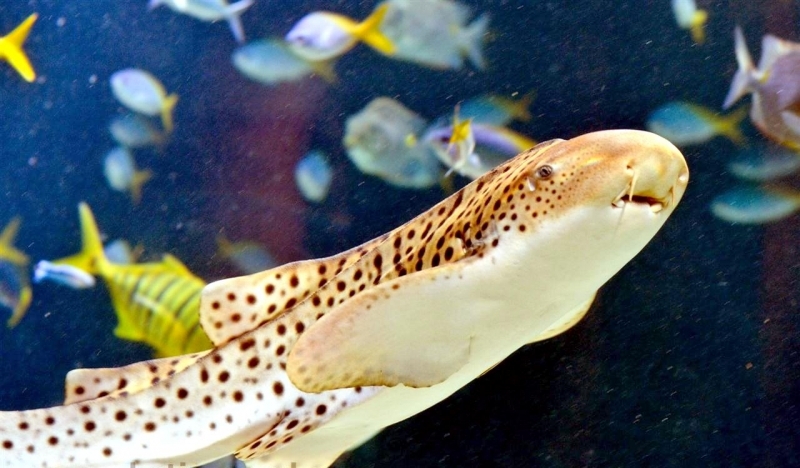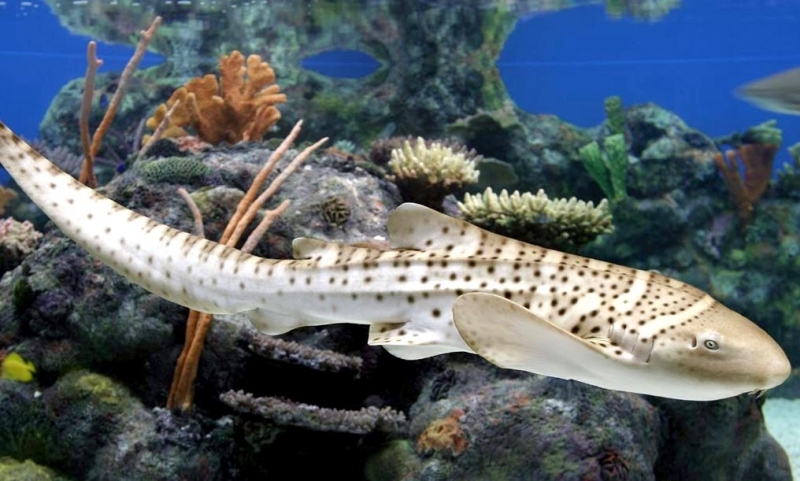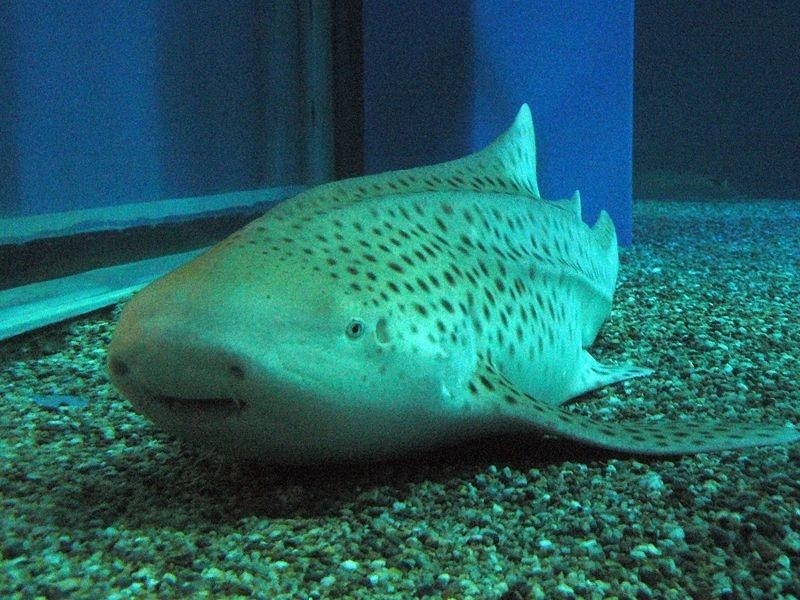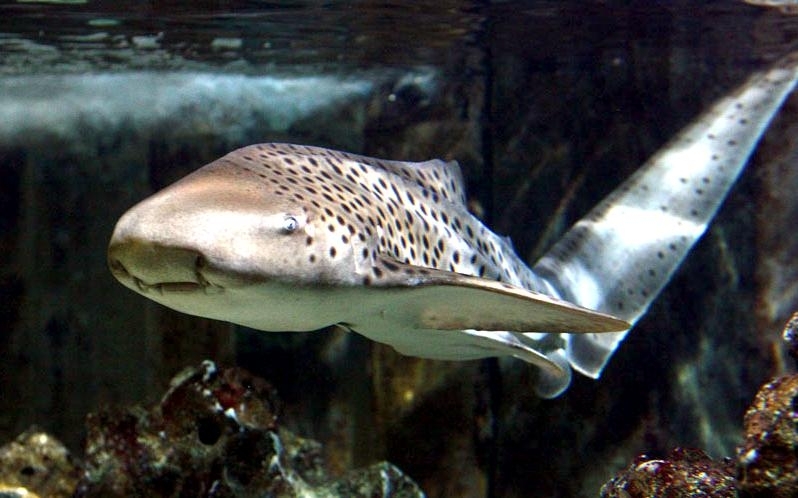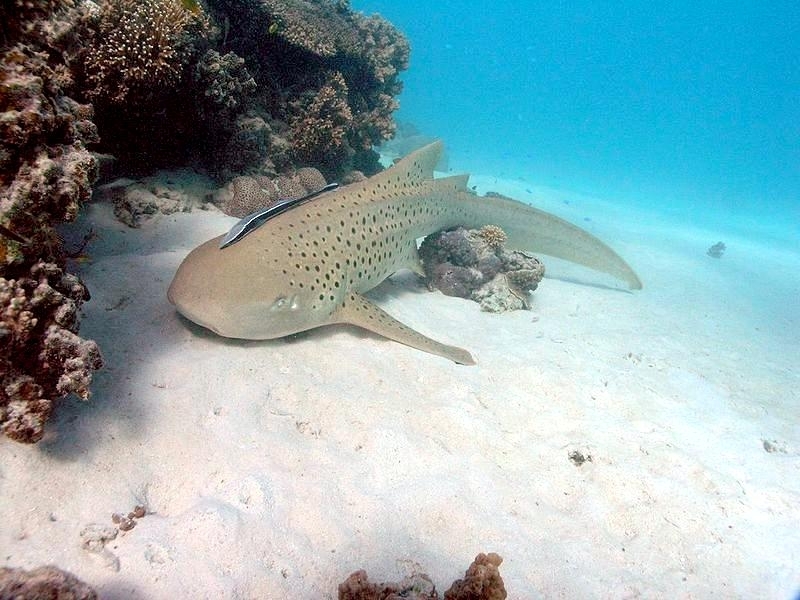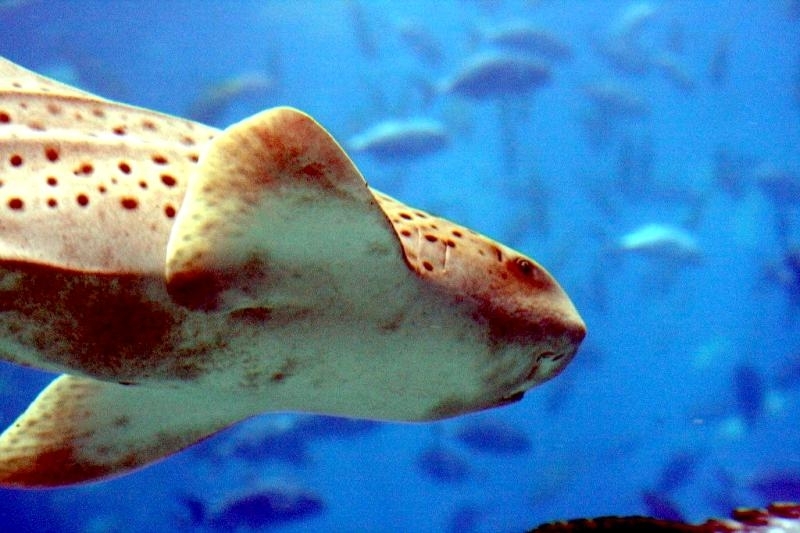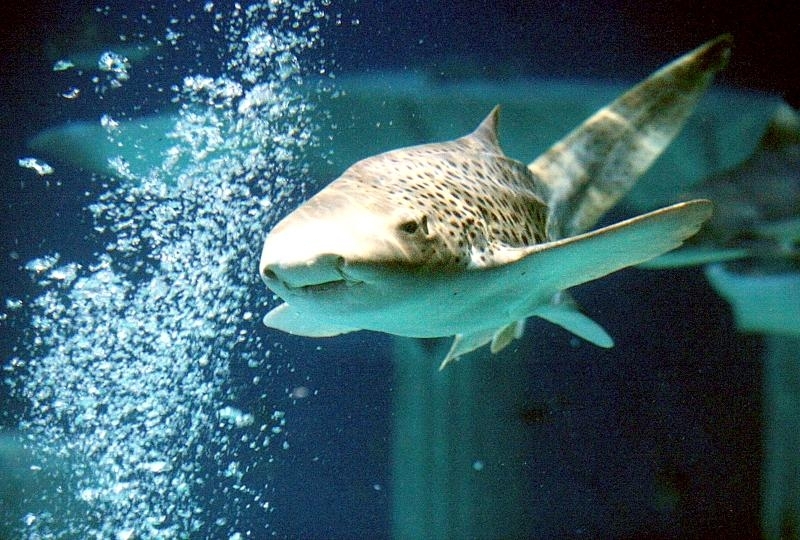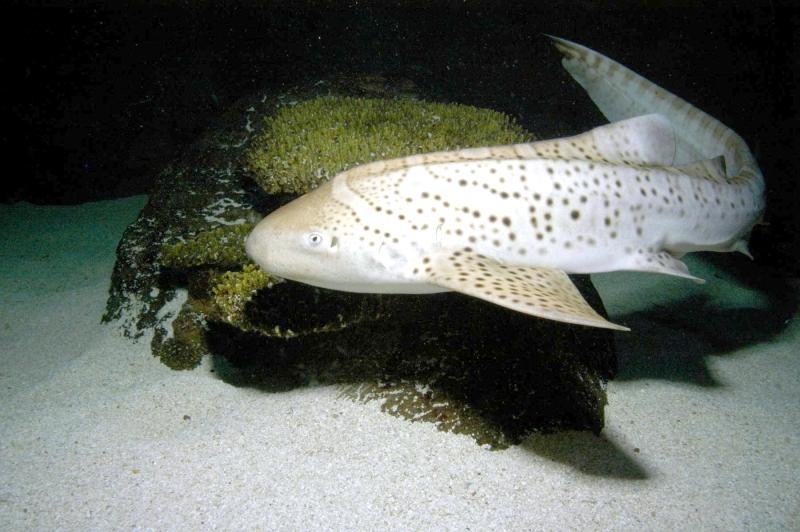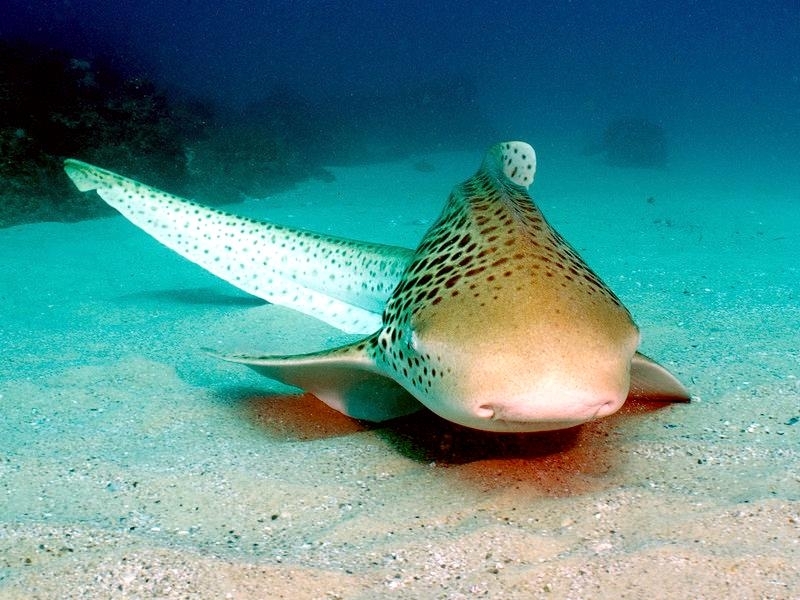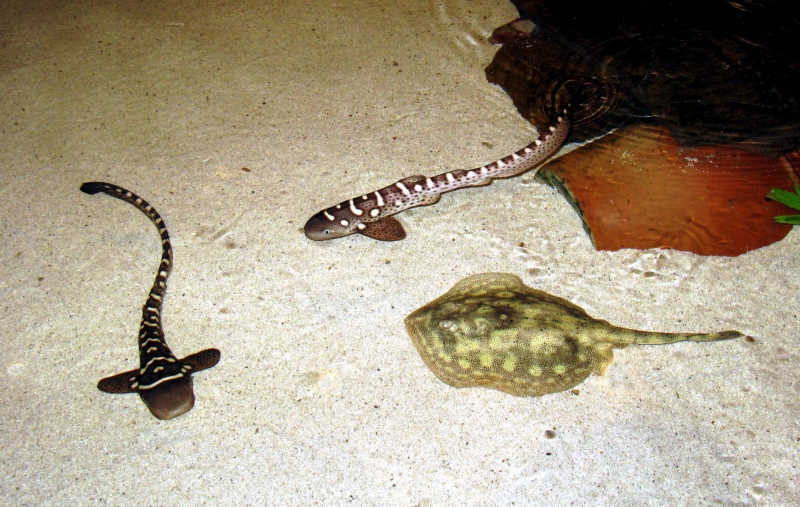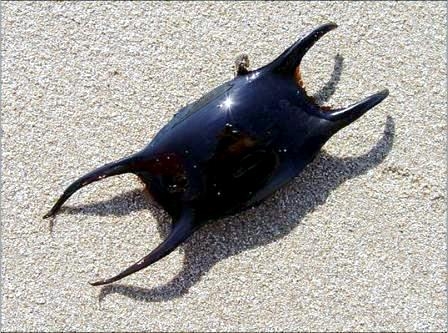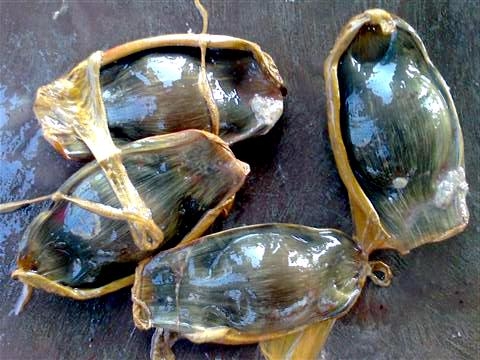“Stegostoma fasicatum”
Zebra Sharks have a cylindrical body with prominent ridges on the sides and 5 gill slits (slits 4 & 5 overlap). The tail lacks a ventral lobe and it is as long as the body. This shark has a broad head, small barbels and a transverse mouth located in front of the eyes. Its spiracles are as large as its eyes. The spineless dorsal fins are back to back. The anterior dorsal fin is much larger than the posterior dorsal fin. The first dorsal fin appears above the bases of pelvic fins, the second dorsal fin is about as large as the anal fin. The body is gray-brown with dark spots in adults. Juvenile Zebra Sharks are darker with light stripes and spots. Maximum size is about 3.5 meters, average size between 2.5-3 meters. Zebra Sharks live over the continental and insular (island) shelves and are very common around coral reefs, often on sandy bottoms but little is known about their biology.
It is known that Zebra Sharks prop themselves up using their pectorals in the sand and faces the current with open mouth. Such behavior and its inactivity during the day points towards a more sluggish life style and indicates that it is probably a nocturnal hunter. Zebra Sharks have been recorded to have entered freshwater, they feed primarily on snails and other mollusks but also on crabs, shrimps and small bony fishes. Zebra Sharks are egg layers with egg cases averaging 17 centimeters long, 8 centimeters wide and 5 centimeters thick. It is unknown if the female lays more than 1 egg at a time but it is most likely. Pups hatch size is between 20-36 centimeters. Male Zebra Sharks reach sexual maturity between about 1.5-1.8 meters, females around 1.7 meters.









